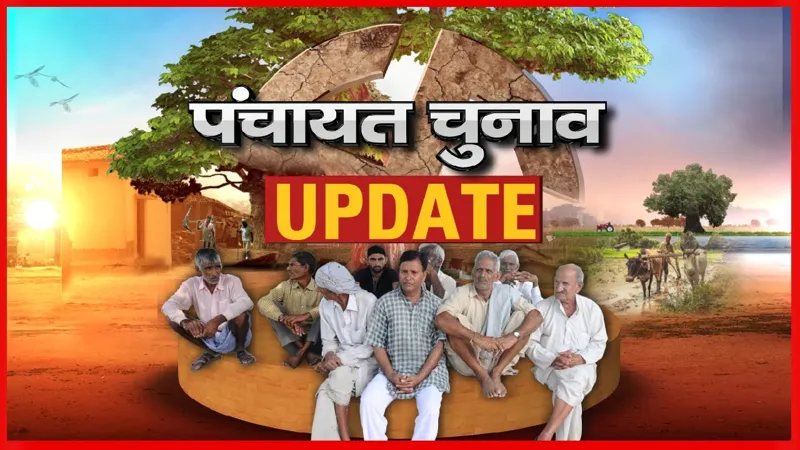As Chhattisgarh gears up for the third and final phase of its Panchayat elections, a vibrant democratic process unfolds across 50 development blocks, inviting the voice of over 53 million eligible voters. Scheduled for Sunday, this crucial phase involves meticulous planning and heightened security, particularly in Naxal-affected regions like Bastar, where the stakes are high. With nearly 76,000 candidates competing for local governance positions, the elections promise to be a significant milestone in empowering rural communities. This article will delve into the preparations, challenges, and implications of these elections for the state’s political landscape.
| Category | Details |
|---|---|
| Election Phase | Third phase of Panchayat elections in Chhattisgarh |
| Election Date | February 25, 2025 |
| Eligible Voters | 53,28,371 (26,37,306 men, 26,91,000 women, 65 third-gender) |
| Polling Stations | 11,430 polling stations established |
| Voting Times | 6:45 AM to 2 PM (Bastar); 7 AM to 3 PM (other areas) |
| Security Measures | Enhanced security in Naxal-affected areas, aerial support for polling personnel |
| Total Candidates | 76,199 for ward panch, 17,191 for sarpanch, 4,659 for Janpad Panchayat, 839 for Zila Panchayat |
| Panchayat Levels | Gram Panchayat (village), Janpad Panchayat (block), Zila Panchayat (district) |
| First Phase Results | 27,210 ward panchs, 3,605 sarpanchs, 911 Janpad members, 149 Zila members elected |
| Second Phase Results | 26,988 ward panchs, 3,774 sarpanchs, 899 Janpad members, 138 Zila members elected |
| Unopposed Elections | 74,310 Panchs, 448 Sarpanchs elected unopposed due to no competition |
| Total Positions Available | 85,188 Panch, 11,181 Sarpanch, 2,932 Janpad members, 432 Zila members |
Introduction to Panchayat Elections in Chhattisgarh
Chhattisgarh is getting ready for its third phase of Panchayat elections, which is a big event for local self-governance. On Sunday, over 53 million eligible voters will have the chance to choose their leaders in 50 different blocks. These elections are important because they help people in villages and towns have a say in how their communities are run. Everyone’s vote counts, and it’s a great opportunity to participate in democracy!
The Panchayat elections are held in three phases, allowing citizens to select their representatives at various levels. This year, the elections are taking place amid heightened security, especially in areas affected by Naxalite activities. With a significant number of candidates and voters involved, these elections are a crucial part of Chhattisgarh’s democratic process.
Understanding the Election Structure
Panchayat elections in Chhattisgarh are unique because they are not held along party lines. Instead, they focus on selecting local leaders like ward panchs, sarpanchs, and members of the Janpad and Zila Panchayats. This system allows community members to vote for candidates based on their qualifications and vision for the village or block without political party influence.
In this election phase, thousands of candidates are competing for various positions, showcasing a vibrant democratic spirit. For instance, there are over 76,000 candidates vying for ward panch posts alone. This level of participation reflects the importance of local governance and the desire of citizens to have a say in their community’s future.
Security Measures for Voters
Given the security challenges in Naxal-affected areas, special measures have been put in place to ensure that voters can cast their ballots safely. Police officers have been airlifted to polling booths in these regions, highlighting the government’s commitment to maintaining security during elections. This effort aims to protect voters and encourage them to participate without fear.
Additionally, there will be increased patrolling around polling stations to ensure everyone feels safe while they vote. The use of helicopters to transport polling personnel demonstrates the seriousness of the situation and the lengths to which authorities will go to facilitate a smooth election process. It’s essential that every eligible voter feels secure and supported.
Voter Turnout and Participation
High voter turnout is crucial for the success of any election, and Chhattisgarh’s Panchayat elections have seen impressive participation rates. In the first two phases, voter turnout was over 81%, showing that people are eager to have their voices heard. This level of engagement is vital for a healthy democracy, as it ensures that elected representatives truly reflect the will of the people.
Encouraging participation is important, especially among young voters and first-time voters. Education campaigns can help inform citizens about the voting process and the importance of their vote. When people understand how local decisions affect their lives, they are more likely to participate in elections and make their opinions count.
The Role of Women and the Third Gender in Elections
In Chhattisgarh’s Panchayat elections, the representation of women and the third gender is a significant aspect. With nearly equal numbers of male and female voters, it’s crucial that women are encouraged to run for positions. This inclusion promotes gender equality and ensures that women’s voices are heard in local governance.
Moreover, recognizing the third gender in these elections is a step toward inclusivity. It allows individuals from diverse backgrounds to participate in shaping their communities. This progressive approach helps to create a more balanced and representative local government that addresses the needs of all citizens.
Counting Votes and Declaring Results
After the elections, the counting of votes is a highly anticipated event. In Chhattisgarh, the results for the third phase of elections will be announced shortly after the polls close. This swift process helps maintain transparency and trust in the electoral system, allowing candidates and voters to quickly learn the outcomes.
Election officials play a crucial role in overseeing the counting process to ensure everything runs smoothly. By using ballot papers, the counting method remains straightforward and easy to understand, making it accessible for everyone involved. Announcing results promptly helps keep the excitement alive and encourages participation in future elections.
Frequently Asked Questions
When will the third phase of Panchayat elections take place in Chhattisgarh?
The third phase of Panchayat elections in Chhattisgarh will be held on Sunday across 50 development blocks.
How many voters are eligible to participate in these elections?
There are 53,28,371 eligible voters, including 26,37,306 men and 26,91,000 women.
What security measures are in place for polling in Naxal-affected areas?
Enhanced security with additional police personnel and helicopter support is provided for polling booths in Naxal-affected Bastar region.
What positions are being elected in this phase of the Panchayat elections?
This phase elects 30,990 ward panchs, 3,802 sarpanchs, 1,122 Janpad Panchayat members, and 145 Zila Panchayat members.
What are the voting times for this election phase?
Voting will occur from 6:45 AM to 2 PM in Naxal areas and from 7 AM to 3 PM in other areas.
How many candidates are contesting in this phase of the elections?
There are 76,199 candidates for ward panch posts, 17,191 for sarpanch, 4,659 for Janpad, and 839 for Zila Panchayat members.
When will the results of this election phase be announced?
The counting and announcement of results for the third phase are scheduled for February 25.
Summary
Chhattisgarh is set to hold the third phase of its Panchayat elections on Sunday, with voting taking place in 50 blocks. Over 53 million people are eligible to vote, including men, women, and transgender individuals. Enhanced security measures are in place, especially in Naxal-affected areas, where polling personnel are being airlifted to ensure safe voting. There are 76,199 candidates competing for various positions, and polling will run from 6:45 AM to 2 PM in high-risk areas and 7 AM to 3 PM elsewhere. Results will be announced on February 25.



